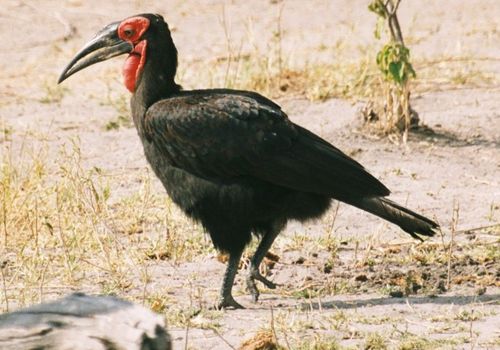
Southern ground hornbill
Bucorvus leadbeateriSouthern ground hornbill
Introduction: The southern ground hornbill (Bucorvus leadbeateri) is named after Benjamin Leadbeater (1760-1837) an eminent dealer in natural history material in London. Bucorvus is the Latin word for large, huge or great raven. Their habitat range includes grassland, savannah and woodland. Rated as vulnerable in southern Africa.
Distribution: Northern Namibia with a population in and around Opuwo, Rundu and the Caprivi.
Diet: Termite wings, dung beetles, grasshoppers, frogs and toads, snakes, lizards, snails, chameleons, turtles and tortoises. Mongooses, squirrels, birds and red-billed quelea nestlings are also taken.
Description: Largest of all hornbills, predominately black in colour less for wing, throat and neck markings. Yellow eyes, black and dark grey legs and feet.
Breeding: Lays only 1 or 2 eggs between August and January with an incubation period of 37 to 43 days.
Size: 90 to 130cm.
Weight: 4.2kg.
Klein Windhoek

